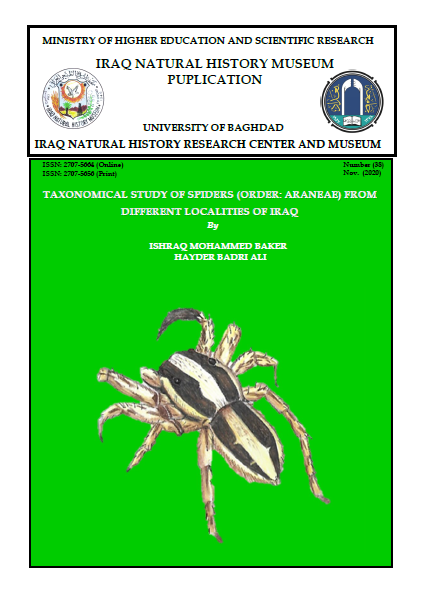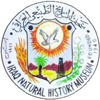Taxonomical Study of Spiders (Order: Araneae) from Different Localities of Iraq
DOI:
https://doi.org/10.26842/inhmp.7.2020.2.38.0051Keywords:
Araneae, Fauna, Iraq, New records, Spider.Abstract
This study represents the first molecular and morphological work on spiders of Iraq. Specimens were collected from different localities in seven provinces during June 2018-July 2019 in different climate conditions. Using both molecular and morphological approaches, eight families representing 17 genera and nine species were identified.
Eight genera: Cryptachaea Archer, 1946; Micaria Western, 1851; Ozyptila Simon, 1864; Paramicromerys Millot, 1946; Tegenaria Latreille, 1804; Trachyzelotes Lohmander, 1944; Uroctea Dufour, 1820 and Zelotes Gistel, 1848; and five species: Cryptachaea riparia (Blackwall, 1834); Tegenaria pagana C. L. Koch, 1840; Trachyzelotes jaxartensis (Kroneberg, 1875); Pardosa amentata (Clerck, 1757) and Oecobius putus O. Pickard-Cambridge, 1876 were first recorded for the Iraqi spider fauna. Identification keys for distinguishing families and genera based on the main characteristics were constructed.
Molecular-identification was performed for specimens that were difficult to identify by morphological methods, and to confirm the results of the morphological identification. DNA was extracted from 28 spiders’ specimens; PCR-amplified the mtDNA fragment of 710bp of the Cytochrome C Oxidase Subunit I (COI) gene using the primersLCO 1490 Forward / HCO-700ME Reverse. The results of DNA sequences showed 16 samples successful in sequencing.
Sixteen local sequenced specimens were submitted to GenBank and edited and combined with COI gene sequences that are associated in GenBank using the neighbor-joining method and the phylogenetic tree was drawn. Eight species of 16 genera belonging to eight families were confirmed by molecular barcoding. The DNA sequences and associated information about the specimens (collection and locality date) deposited in GenBank.










